Return to Life: Breast Cancer Recovery
What are some things you can do to help your client recover and thrive after Breast Cancer treatment? What are important things to know to work with BC clients…
Lost your password? Please enter your email address. You will receive a link to create a new password.
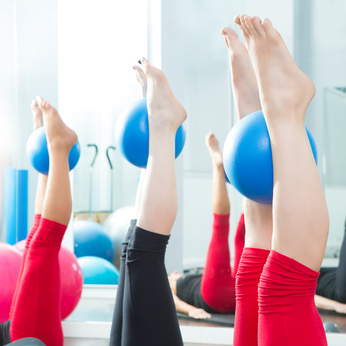
What are some things you can do to help your client recover and thrive after Breast Cancer treatment? What are important things to know to work with BC clients…

Once a virtual death sentence, cancer today is a curable disease for many and a chronic illness for most. With continued advances in strategies to detect cancer early and treat it effectively along with the aging of the population, the number of individuals living years beyond a cancer diagnosis can be expected to continue to increase.
 Approximately 15.5 million Americans in the United States are cancer survivors. By 2026 that number is expected to reach 20 million. Anyone who has been diagnosed with cancer, from the time of diagnosis through the rest of his or her life is considered a cancer survivor. And while not all cancer survivors are older adults, many are simply because of the cumulative effect of years of lifestyle issues that are risk factors for their disease. Survivors less than or equal to 19 years old comprise 1% of the cancer survivor population, 6% of survivors are aged 20–39 years, 33% are aged 40–64 years and 60% (more than half) are aged greater than or equal to 65 years.
Approximately 15.5 million Americans in the United States are cancer survivors. By 2026 that number is expected to reach 20 million. Anyone who has been diagnosed with cancer, from the time of diagnosis through the rest of his or her life is considered a cancer survivor. And while not all cancer survivors are older adults, many are simply because of the cumulative effect of years of lifestyle issues that are risk factors for their disease. Survivors less than or equal to 19 years old comprise 1% of the cancer survivor population, 6% of survivors are aged 20–39 years, 33% are aged 40–64 years and 60% (more than half) are aged greater than or equal to 65 years.
Breast cancer survivors are the largest constituent group within the overall population of cancer survivors (22%), followed by prostate cancer survivors (19%) and colorectal cancer survivors (11%) (3). Gynecological and other genitourinary cancers each account for 9% of cancer survivors, followed by hematological cancers and lymphoma (7%) and lung cancer (4%). Other cancer sites account for much smaller percentages and together are responsible for 19% of the total number of survivors. In terms of stratification by gender, more than two thirds (69%) of all female cancer survivors have a history of breast (41%), gynecological (17%) or colorectal (11%) cancer. For male survivors, two thirds (66%) have a history of prostate (39%), other genitourinary (such as testicular or renal) (14%) or colorectal (13%) cancer.
Not surprisingly, cancer survivors are often highly motivated to learn more about things like nutrition, supplements and herbal remedies, and exercise that might improve treatment outcomes and ultimately their survival and quality of life. For many of the most important nutrition and physical activity questions faced by cancer survivors, the scientific evidence comes only from observational and laboratory animal data, or unreliable reports from poorly designed clinical studies. Moreover, the findings from these studies are often contradictory. Very few controlled clinical trials have been done to test the impact of diet, nutritional supplements or nutritional complementary methods on cancer outcomes among cancer survivors.
In an effort to identify and evaluate the scientific evidence related to optimal nutrition and physical activity after the diagnosis of cancer, the American Cancer Society (ACS) convened a group of experts in nutrition, physical activity and cancer. The findings of this group guide healthcare providers, cancer survivors and their families through the mass of information and help them make informed choices related to diet and exercise. The Expert Committee reviewed all of the scientific evidence and best clinical practices for different types of cancer and “graded” both the quality and certainty of the scientific evidence for factors affecting the most common cancers. As was already mentioned, there are few clear answers to many questions, a wide range of sources and often conflicting information. But, these experts agree that even when the scientific evidence is incomplete, reasonable conclusions can be made that can help to guide choices in the areas of nutrition and physical activity.
Physical activity may help cancer patients build up their physical condition; decrease the number of comorbid conditions (like heart disease and diabetes); reduce drug interactions; help cancer patients cope with treatment; restore good health; improve quality of life during and after treatment; and help cancer patients and survivors maintain independence as long as possible
Physical rehabilitation programs similar to those for cardiac rehabilitation may be effective in managing, controlling or preventing adverse medical and psychosocial outcomes manifested during cancer survivorship. For example, exercise programs are being developed as interventions to improve the physical functioning of persons who have problems with mobility as a result of therapy and are also being shown to be efficacious for weight control after breast cancer treatment, lessen the effects of chronic fatigue, improve quality of life, prevent or control osteoporosis as a result of premature menopause and prevent or control future or concurrent comorbidities.
Diet, weight and physical activity interventions carry tremendous potential to affect length and quality of survival in a positive manner and prevent or control morbidity associated with cancer or its treatment.
 In general, physical activity is likely to be beneficial for most cancer survivors. Recommendations on the type, frequency, duration and intensity of exercise should be individualized to the survivor’s age, previous fitness activities, type of cancer, stage of treatment, type of therapy, and comorbid conditions.
In general, physical activity is likely to be beneficial for most cancer survivors. Recommendations on the type, frequency, duration and intensity of exercise should be individualized to the survivor’s age, previous fitness activities, type of cancer, stage of treatment, type of therapy, and comorbid conditions.
Particular issues for cancer survivors may affect or contraindicate their ability to exercise. Effects of their cancer treatment may also promote the risk for exercise-related injuries and other adverse effects.
The following specific precautions are from the American Cancer Society:
For the general population, the ACS and other health organizations recommend at least 30 minutes of moderate physical activity at least 5 days per week to reduce the risk for cancer, cardiovascular disease and diabetes. These levels of activity have not been studied or tested specifically in cancer survivors, however. For the general population and for cancer survivors, any movement is likely beneficial. Therefore, although daily and regular activity may be preferred and may be a goal, any steps that are taken to move from a sedentary to an active lifestyle should be encouraged. For survivors wanting maximum benefit, the message should be that the health benefits of exercise are generally linear, with benefit related to higher intensity and duration, although extremely high levels of exercise might increase the risk for infections.
Tammy Petersen, MSE, is the Founder and Managing Partner for the American Academy of Health and Fitness (AAHF). She’s written a book on older adult fitness and designed corresponding training programs. SrFit Mature Adult Specialty Certification is used nationwide as the textbook for a college based course for personal trainers who wish to work with mature adults. SrFit is also the basis for a specialty certification home study course that qualifies for up to 22 hours of continuing education credit with the major personal trainer certification organizations.
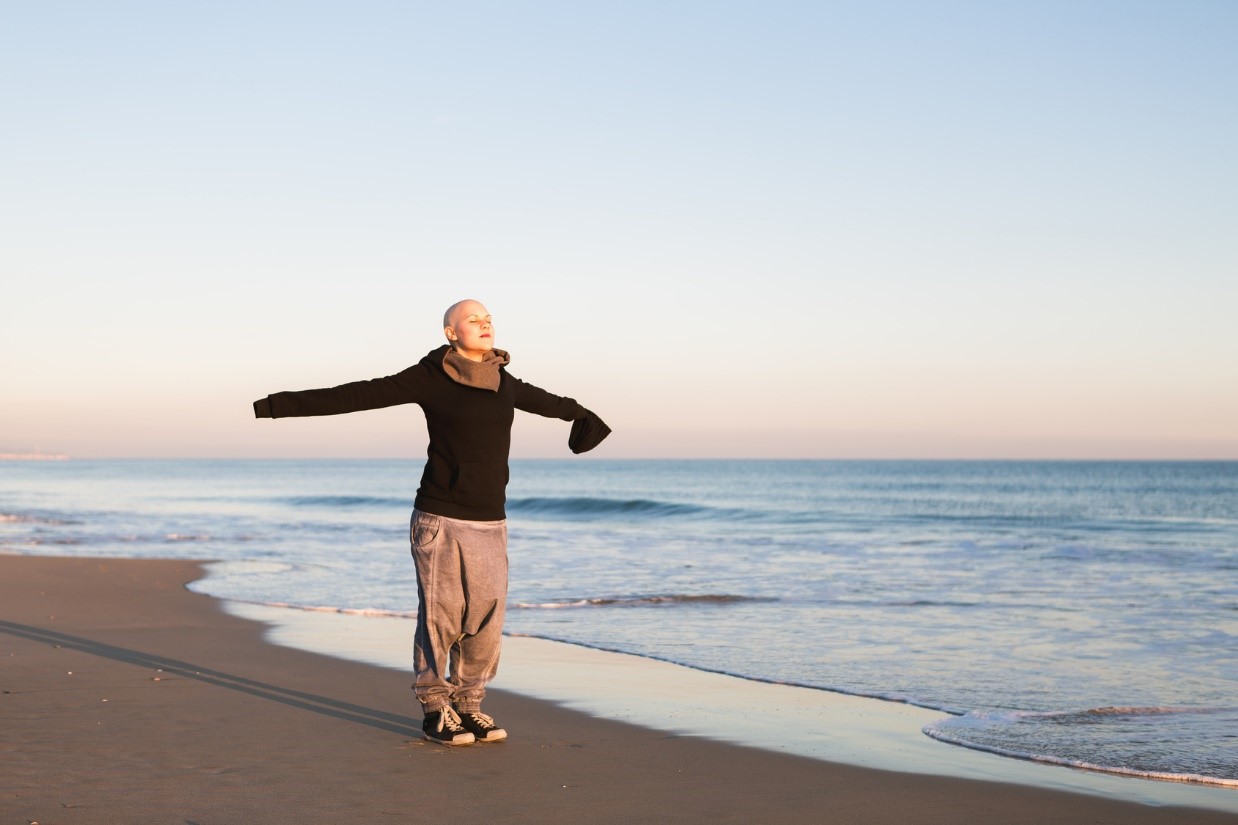
“CANCER”. For those who are not diagnosed with this condition, just saying the word out loud to yourself highlights many negative connotations associated with it.
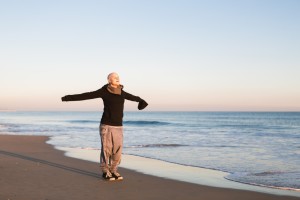 We all consider the undesirable aspects associated with cancer and think to ourselves how lucky we are not to have that added stress in our life. But what about those who are diagnosed with cancer?
We all consider the undesirable aspects associated with cancer and think to ourselves how lucky we are not to have that added stress in our life. But what about those who are diagnosed with cancer?
Life can already be quite overwhelming when considering the financial strains, family events and various appointments scheduled into each day. But then add cancer into the mix and what do you get? You get a situation that can be very debilitating both physically, socially and emotionally, and can cause an array of adverse behaviours such as excessive alcohol consumption, sedentary behaviour and smoking. There is some evidence to suggest that elevated stress levels heighten the inflammatory response associated with stress hormones which may be directly related to cancer development and growth, however, there is an abundance of research showing an in-direct link between stress and cancer growth due to the adverse behaviours mentioned above. Thus, having the ability to conquer stress, identify the best way for you to deal with stress, and to become resilient to it will positively impact the management of your cancer and the fighting process.
So we know that stress and anxiety are typically elevated in people with cancer, and we know through available research that we need to lower or eliminate these stress levels to stop risky adverse behaviours associated with stress, but how do we go about doing that?
Recently at our training studio we began an exercise program for clients diagnosed with cancer called Lift For Life. Our trainers discussed the idea of stress and anxiety with our cancer clients and what that means to them. During our discussion we identified many situations which cause stress in their lives, both related and not related to cancer. Some of these situations were:
After identifying what causes heightened stress levels, we brainstormed ideas we could implement to help overcome such stresses:
We recognize that stress factors in to a large degree. In the treatment of this deadly disease, and while we see the need for exercise and nutrition, there must also be a focus on improving the lifestyle habits and the personal ability of the person to be mentally healthy as well. Far too many programs focus on just the physical component or treat the physical symptoms, neglecting the importance of addressing the psychological and emotional needs to assist the body in healing itself. This is why our program is designed around exercise and education. There is an abundance of research illustrating the physical, health and emotional benefits of exercise for those suffering and over-coming cancer. Cancer brings with it atrophy, osteopenia, increased risk of cardiovascular disease and falling. The benefits of exercise and stress reduction can help alleviate many of these ancillary negative conditions associated with cancer. Some of these benefits include:
After the Lift For Life brainstorming session I had with my cancer clients I was surprised to find that no one had identified what I perceived as being the most important elements in overcoming stress and anxiety. Exercise and rhythmic breathing. Of course once I mentioned this, all clients agreed that these were both extremely important.

It is at this point you may be thinking “yes I know about the importance of exercise and the benefits associated both physically and mentally, but what has breathing got to do with it?”
When I think of someone being stressed or anxious, I picture someone hyperventilating into a brown paper back and trying to slow down their breathing. Most people who are stressed are stuck in a constant state of over breathing and hyperventilation. Often when people are stressed they are told to “take a deep breath and relax”. This is, however, quite problematic as this action reinforces anxiety and stress symptoms by overstimulating the sympathetic nervous system, and eventually causes habitual over breathing actions. Even when the stress is no longer present, a person will continue to breathe this way as this is how they have taught themselves to breath. Dr James Mercola (of the Game Changer) emphasizes this further when he stated “When you feel tense and anxious, the sympathetic fight-or-flight aspect of your nervous system turns on, quickening your breathing and increasing your heart rate, blood pressure and stress hormone production. Uncontrolled, rapid, chest-oriented respiration can actually initiate your sympathetic nervous system — even if no other stress factors are present — locking you into a state of breathing-induced stress”. Hence, learning how to breathe slowly and softly through the nose is critical.
There are many breathing exercises which can help to reduce stress levels, improve your health and calm your body. A simple breathing exercise which can be done anywhere and has been reported to help reduce stress and anxiety symptoms is as follows:
The 4-7-8 breathing technique taught by Dr Andrew Weil is also quite effective in reducing stress levels and regulating your breathing.
We must acknowledge the damage that stress can cause on our health and when we are already in a state of poor health, a little bit more than normal is enough to create more problems. Stress cannot be avoided for it is something we will all encounter at many times in our lives. However, being stuck in an extended state of stress will do serious damage to your body. Learning different strategies and having tools and resources to combat the symptoms associated with stress and anxiety are essential in the prevention and treatment of cancer as well as all kinds of other health problems and diseases.
References:
http://www.mercola.com/
http://www.cdc.gov/
Cancer Council Australia
Nick Jack is owner of No Regrets Personal Training a Rehabilitation & Sports Training Studio located in Melbourne Australia. Having worked as a Trainer for over 10 years and has qualifications as a CHEK Exercise Coach, CHEK Golf Performance Specialist & Master Rehab Trainer and Twist Conditioning Sports Conditioning coach he specializes in working with rehabilitation and injury prevention programs. You can check out his website at www.noregretspt.com.au

A cancer diagnosis is tremendously overwhelming and often takes away the feelings of control over one’s life. After diagnosis comes the whirlwind of information and new decisions that revolve around living with cancer. Health & Wellness Coaches work with clients in a variety of ways to help them navigate through the healthcare system and develop a self-created plan for treatment and lifestyle that supports the client in managing and re-gaining control over their lives.
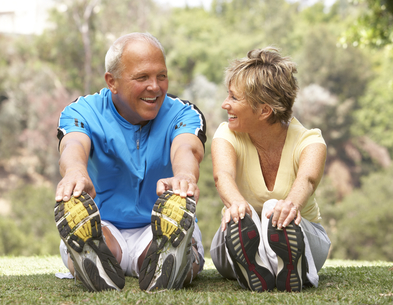
I have mentioned many times thus far, not just that exercise is the managing partner of integrative oncology, but I try to be really careful to say the right exercise. As much as exercise does hold the key to our magic kingdom of health within, there are contraindications, both in terms of prevention and recovery, and prevention of recurrence.
 To understand this, let me give you a very brief intro to oxidative stress. We have all read about the importance of eating our fruits and vegetables to provide much needed antioxidants. This is because we live a life where oxidative stress is in abundance. As exercise is the one and only Rx with no bad side effects, the truth is, we should always say “the right exercise”.
To understand this, let me give you a very brief intro to oxidative stress. We have all read about the importance of eating our fruits and vegetables to provide much needed antioxidants. This is because we live a life where oxidative stress is in abundance. As exercise is the one and only Rx with no bad side effects, the truth is, we should always say “the right exercise”.
Unfortunately in our world of extremes and quick fixes, we think of exercise as bop till you drop. Pushing hard, sweating — and as some celebrity trainers like to take pride in — push till you
throw up.
OK… I will NEVER support the latter, under any circumstance, but for some people pushing to the point of sweaty, dirty, pumped, driven, is a great thing.
I do believe the fountain of youth is our own sweat! And yes, that level of intensity to achieve that state differs greatly amongst people.
The danger exists, when people exceed their optimal levels, which we can do unknowingly. Given the chronic illnesses, the data seems to support most people are not exerting themselves in terms of exercise or physical activity anywhere near that optimal level.
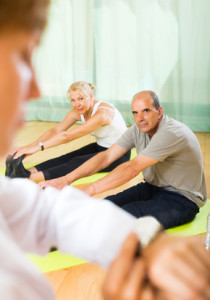 However, with people recovering from cancer, it is very important to work at the right level, and know that slow and steady wins the race. And just to throw in another caveat – yes this level of intensity will vary drastically, depending on the type of cancer and treatments utilized.
However, with people recovering from cancer, it is very important to work at the right level, and know that slow and steady wins the race. And just to throw in another caveat – yes this level of intensity will vary drastically, depending on the type of cancer and treatments utilized.
Oxidative stress occurs when the production of reactive oxygen species (ROS), often referred to as “free radicals,” exceeds antioxidant defence. There are many perpetrators in our world to the production of reactive oxygen species: alcohol, sugar, toxins, certain chemicals… a very long list, and the truth is we have to add exercise to this list if we are doing it beyond the appropriate point. Or if exercise is counterproductive to…
The balance between the ROS and antioxidants is out of whack, upsetting our inner ecosystem, creating an environment for cancer to survive and thrive. As always, its all about balance.
And this is yet another reason it is critical to have a well balanced, nutrition packed diet. The expression often used is “eat a rainbow”, because eating an assortment of colors (fruits and vegetables, not candy) is a great way to ensure getting a variety of antioxidants our bodies need to combat those free radicals. And by the way, the danger of an imbalance in this equation is a factor in not just cancer but many other diseases, including heart disease, Alzheimer’s, depression, macular degeneration, autoimmune disorders. Now, let’s think about the many possible side effects of treatments (medications) for these diseases… cancer. OK, let’s eat our antioxidants! (I promise, much more about antioxidants in another article)
Or as my chick flick heart insists: Exercise & Nutrition are the greatest love affair of all times. One just cannot live without the other.
The point is NOT don’t exercise because it might be a source of oxidative stress. The point is we must expand our view of what exercise is. The point is to understand physical activity vs. exercise, dynamic vs. static exercise. Exercise is NOT about pushing in misery until you drop in a gym you don’t like! The point is there are many types of exercise that can be performed multiple times through out the day to tweak our immune & circular systems, and to accomplish that flow of Qi, that inner ecosystem.
The other point we have to remember, in all of our wonderful forms of exercise: training, cardio respiratory, strength, yoga, pilates, Qi Gong Tai chi, they all have wonderful benefits and healing powers. However, there are boundaries & contraindications for all of them. There are a number of parameters involved when deciding on an exercise program for cancer recovery & beyond. To name a very few: the type of cancer, treatment, potential for lymphedema, other pre-existing medical conditions, level of conditioning, goals of the program, fat loss suggested, preservation of muscle mass, side effects of treatment. And every one of these categories opens up many
other considerations.
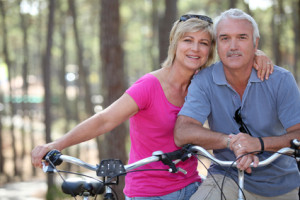 But the most important factor of all is the F factor, FUN. What will we actually, enjoy, embrace, do, and want more. We learn very quickly in the fitness business, “no time” is an excuse. When we know the literally infinite possibilities for physical activity, no time is an excuse, or, a very limited knowledge of what exercise is.
But the most important factor of all is the F factor, FUN. What will we actually, enjoy, embrace, do, and want more. We learn very quickly in the fitness business, “no time” is an excuse. When we know the literally infinite possibilities for physical activity, no time is an excuse, or, a very limited knowledge of what exercise is.
But step one is MOVE. Whether we move and pump those muscles when seated or standing, get it moving and pumping. Please consult a trained professional in cancer exercise training.
Even if the professional tells you they have worked with many cancer patients, it does not mean he or she has been trained in cancer exercise, and knows the many forms of exercise available, not just their own platform, and is aware there are contraindications, and potentially could have an adverse effect on recovery.
There is no one Rx for each cancer. We cannot say, “For breast cancer do this, for prostate cancer do that.”
Cancer exercise is both art and science, supports a mind body connection and creates an environment within to optimize treatment outcomes. Yes, always get permission from the health care professionals, but don’t let them think you are considering training for Ironman, This is not what cancer exercise is all about.
In exercise, we follow the FITT formula: Frequency Intensity Type Time
For cancer exercise I have modified this formula. FFITTT: FUN Frequency Intensity Type Time Telomeres…. leaves you hanging for another blog!
For a constant supply on recent studies on cancer prevention and recovery, please join me on Facebook.
Shira Litwack is the Director of International Relations and Master Trainer at, Cancer Exercise Training Institute and creator of Best in Health Radio.
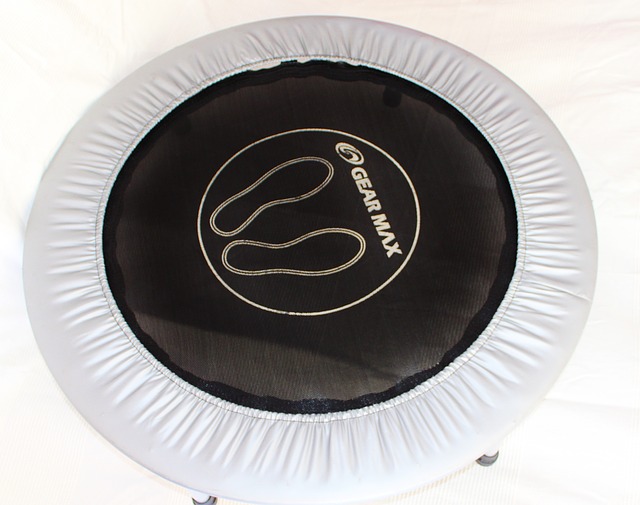
Rebounding is a complete cellular exercise, stimulating the activity of the lymphatic system (a critical part of the immune system). Rebounding 3-5 times per week at a minimum of 10-15 minutes at a time is highly beneficial.* It is effective at a minimal bounce, using acceleration and deceleration, with each bounce, to open and close the one-way valves between the lymphatic system and the cells. Lymphatic fluid surrounds all of the cells of the body. While bounding toxins, poisons, and metabolic waste are pulled out of the cells into the lymph fluid, while oxygen and nutrients (transferred previously at the capillaries, from the blood) are pulled in the cells from the lymph fluid. Within the lymph system are lymphocytes, for example- white blood cells, which consume metabolic waste, bacteria, and dead cells. Rebounding keeps the lymph system moving and unplugged, so lymphocytes have free reign to do their job. More importantly, bounding does this without stressing the hips, knees, or ankles, or creating shin-splints. It can be done on a daily basis or multiple times per day without creating overuse injury.
 What is the Lymph System and how does it help me?
What is the Lymph System and how does it help me?The lymphatic system acts as a secondary circulatory system, except that it collaborates with white blood cells in lymph nodes to protect the body from being infected by cancer cells, fungi, viruses or bacteria.
The lymphatic system is a system of thin tubes that runs throughout the body. These tubes are called ‘lymph vessels’.
Unlike the circulatory system, the lymphatic system is not closed and has no central pump. It is not under pressure and only moves because of exercise or muscle contraction.
When the lymphatic system is congested, the cells become deprived of oxygen, affecting the body’s ability to rid itself of its own waste material. Over time, other body systems that rely on the lymphatic
It takes only two minutes of rebounding to flush the entire lymphatic system, while cleansing and strengthening cells and lymph nodes. A further benefit to the body is that during this brief time span the white blood cells of the immune system triple in number and remain elevated for an hour. These specialized cells play a major role in the body’s defense against illness and disease.
At this point another two-minute rebound session would increase the demand for white blood cells as the process of cleansing, strengthening, and the flushing away of spent cells and other cancerous debris is repeated.
When beginning a program of regular rebounding it’s best to gradually increase time and intensity as the body – including bones and internal organs – adjusts to the increased gravitational load and becomes stronger.
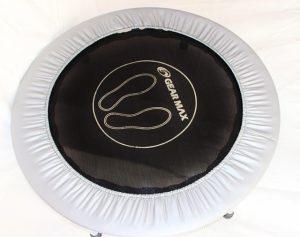 Rebounding increases capacity for respiration
Rebounding increases capacity for respirationAmong the various functions of the lymphatic system is its ability to carry waste away from the cells and bloodstream to the body’s organs of elimination. The system consists of veins and capillaries, with one-way valves, that contain a clear fluid called lymph. This fluid also surrounds cells throughout the body and collects cellular debris before draining it into the lymphatic system. Lymph carries the waste on a one-way path toward the heart and passes through many filters (lymph nodes) where special white blood cells attack and eliminate foreign molecules.
Once the lymph fluid approaches the heart it is returned to circulation and makes its way for further cleansing of toxins by the liver and kidneys. The lymphatic vessels are not connected to the blood circulatory system, and unlike blood which is pumped by the heart, lymph fluid relies on bodily movement and exercise to drive it through the lymphatic system. Forceful flushing of the system cleanses lymph nodes, contributes to healthy, clear lymph fluid, and boosts the immune system. Stagnant, slow-moving and thick lymph fluid is due to a lethargic, toxic body and weakened immune system.
When the lymph fluid remains sluggish the lymph nodes become clogged and lose their filtering ability. Without routine flushing of the lymph, debris becomes trapped in the body, creating a toxic overload and contributing to the onset of disease.
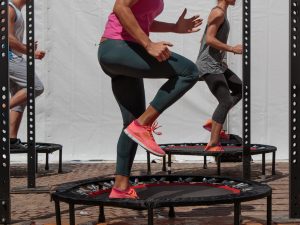 It takes only two minutes of rebounding to flush the entire lymphatic system, while cleansing and strengthening cells and lymph nodes. A further benefit to the body is that during this brief time span the white blood cells of the immune system triple in number and remain elevated for an hour. These specialized cells play a major role in the body’s defense against illness and disease.
It takes only two minutes of rebounding to flush the entire lymphatic system, while cleansing and strengthening cells and lymph nodes. A further benefit to the body is that during this brief time span the white blood cells of the immune system triple in number and remain elevated for an hour. These specialized cells play a major role in the body’s defense against illness and disease.
At this point another two-minute rebound session would increase the demand for white blood cells as the process of cleansing, strengthening, and the flushing away of spent cells and other cancerous debris is repeated.. Therapeutic rebounding has been shown to reduce cancerous tumors and improve or heal a host of other ailments (3).
When beginning a program of regular rebounding it’s best to gradually increase time and intensity as the body – including bones and internal organs – adjusts to the increased gravitational load and becomes stronger.
Doreen Puglisi, MS is the Founder and Executive Director of Pink Ribbon Program. The Pink Ribbon program works to give every woman the ability to regain a sense of well-being that had been lost from diagnosis through surgery into recovery.
References:

Do you know any breast cancer survivors? What if you were told that exercise could help them get their lives back? Would you want to learn more?
 There are 3 million breast cancer survivors in the United States today. Survivorship is considered to be from the time that one is first diagnosed to many years later. Fitness professionals are uniquely positioned to help survivors regain control over their mind and body through a well thought out, systematic and progressive exercise program.
There are 3 million breast cancer survivors in the United States today. Survivorship is considered to be from the time that one is first diagnosed to many years later. Fitness professionals are uniquely positioned to help survivors regain control over their mind and body through a well thought out, systematic and progressive exercise program.
There are many women who live with metastatic disease. This is breast cancer that has spread to other organs and is the most serious diagnosis. Breast cancer survivors undergo different treatments depending on the stage of their breast cancer.
The stages are organized from 1-4 with stage 1 being the least serious and stage 4 being cancer that has spread to other organs. The treatments can include surgery, radiation, and systemic treatments. Systemic treatment affects the entire body and includes chemotherapy and biological and hormonal treatments. In addition, surgery to replace the breast is another option performed either at the time of surgery or later on.
In addition, the treatments can vary from one individual to another as there are many different treatment protocols which one can choose from in coordination with the medical team. Access to treatment facilities can be another factor in treatment options.
Unfortunately, breast cancer treatment can wreck havoc physically, cognitively, emotionally and spiritually. Some of the challenges that survivors face are chemotherapy Induced peripheral neuropathy, fatigue (most common), osteoporosis, chemotherapy related cognitive dysfunction, pain, weight gain, cardio toxicity and decreased balance.
A medical fitness trainer can provide survivors with a safe well- balanced exercise program that supports healing from treatments, side effects, treatment precautions, and contraindications.
Naomi Aaronson MA OTR/L CHT, CPI, Certified Cancer Exercise Trainer, has been an occupational therapist for 20 years and a certified hand therapist for 10 years. Naomi was introduced to Pilates after two car accidents, and credits Pilates for restoring both her strength and spirit. She is a well known author and presenter who believes in the power of mind and body to foster healing.

Jane is a breast cancer survivor. She has dealt with the diagnosis and the life-changing stress it brings. She has gone through radiation to shrink her tumor to an operable size. She endured surgery that took not only her breast, but many critical lymph nodes from her armpit as well. She has undergone chemotherapy to be sure that no rogue cells may survive. She emerges from this ordeal feeling battered and bruised inside and out. The chemo has left her thin, bald, and exhausted. She experiences lasting achiness and pain in the affected arm, where circulation is sluggish at best. Her surgical scars continue to generate pain long after they have healed. She wonders when, if ever, she’ll feel like herself again. Her caregivers suggest that she “learn to live with it.”
Breast cancer survivors face so many challenges. One of the most frustrating is the challenge to “learn to live with the pain” that so often follows breast cancer surgery and treatment. Wouldn’t it be great if there were a therapy available that would ameliorate many of the worst side effects of breast cancer treatment? What if there was something a person could do that would reduce postsurgical pain, limit edema, and raise energy levels – all without drugs or further surgical intervention?
 There is: more and more breast cancer survivors are discovering two adjunct treatments that help them to cope with the changes their illness and surgery bring about: friction therapy and massage therapy.
There is: more and more breast cancer survivors are discovering two adjunct treatments that help them to cope with the changes their illness and surgery bring about: friction therapy and massage therapy.
Many massage and bodywork therapists have traditionally been concerned about the possibility that bodywork, through its impact on the circulatory and lymphatic systems, could put cancer patients at risk of exacerbating their disease. Recently the profession has begun questioning this anxiety, and techniques have been developed that allow massage and bodywork therapists to work safely and effectively with many cancer patients. Such therapy is done in conjunction with general cancer care, always with the knowledge and understanding of the rest of the patient’s healthcare team. Friction or massage therapy is never done without the specific approval from the treating physician.
When a person undergoes surgery for any reason, the accumulation of scar tissue can cause lasting pain. Scar tissue grows wherever the skin, muscle, fascia, or other types of tissue have been injured. When a body is recovering from injury, new fibers of dense proteins begin to knit the tissues back together. These protein fibers, called collagen, are strong and sticky. They are very good at holding things together, but they can create “adhesions” – places where layers of tissue that should move freely become literally glued together. Scar tissue adhesions can limit mobility. As the scar tissue matures it begins to contract, which limits mobility even further.
Friction therapy can reverse this process in two ways. If it is applied in the first three or four months of scar tissue formation, it can influence the quality of the healing for maximum efficiency and minimize unnecessary scar tissue build-up. But even if friction therapy isn’t tried until many months after the tissue has healed incorrectly, it can still free the tissue by reversing much of the adhesion process.
Friction therapy is a non-invasive, hands-on treatment performed by a skilled therapist. No oils or creams are used so there can be no gliding over the skin. The pain producing scar tissue formation is identified first. Then the therapist uses gentle strokes, performed at a ninety degree angle to the scar, to slowly and carefully break useless, pain-causing scar tissue apart.
The client is then given gentle movements to perform daily at home to prevent new scar tissue from forming in the same places. The process is slow and steady, relieving the pain due to the formation of adhesive scar tissue.
Stress has a profound impact on the body, which devastates our disease fighting mechanisms. The chemicals we secrete when we are under stress interfere with digestion and sleep, slowing down the healing process. Research with breast cancer patients has shown that massage therapy reduces the level of stress-related chemicals in the body. Breast cancer patients who receive massage also report lower levels of anxiety and depression than recipients of other interventions. This phenomenon has been observed in other populations as well.
Cortisol and adrenaline, the hormones we secrete during short and long-term stress, have been seen to diminish immune system activity. Some immune system agents that are especially disabled by a stress reaction are called natural killer cells. These natural killer cells target developing tumors for destruction.
In some populations, massage therapy has been shown to not only decrease the secretion of stress hormones, but also to increase the number of natural killer cells circulating in the blood.
Radiation and chemotherapy are physically exhausting for the body. It can take every iota of energy simply to get up in the morning when you are in these stages of fighting cancer. Massage therapy helps to increase overall levels of energy by reducing unnecessary levels of muscle tension and stress that can make it hard to get the rest and sleep a person in recovery needs.
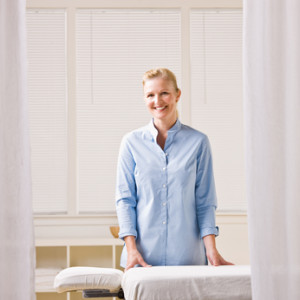 A woman who has been through breast cancer surgery, whether it’s a simple lumpectomy or a radical double mastectomy, emerges with a body that is fundamentally different from the one she began with. Many women struggle with body image issues following surgery. Breasts can help define a woman’s femininity, and to lose part or both of them can change how she feels about herself as a person. One of the most precious gifts massage therapy can give is a time of intimate non-sexual touch during which the whole goal of the session is to focus on how wonderful the client’s body can feel. Time spent in the simple enjoyment of physical touch can go a long way in the journey toward self-acceptance and the joy of being alive.
A woman who has been through breast cancer surgery, whether it’s a simple lumpectomy or a radical double mastectomy, emerges with a body that is fundamentally different from the one she began with. Many women struggle with body image issues following surgery. Breasts can help define a woman’s femininity, and to lose part or both of them can change how she feels about herself as a person. One of the most precious gifts massage therapy can give is a time of intimate non-sexual touch during which the whole goal of the session is to focus on how wonderful the client’s body can feel. Time spent in the simple enjoyment of physical touch can go a long way in the journey toward self-acceptance and the joy of being alive.
Massage therapy can increase energy, improve circulation and mobility, decrease soreness, help with body image, and alleviate stress. So the next time you ask about your pain and you’re told to “learn to live with it,” be aware that you have other options. Look up a massage therapist in your area who specializes in working with cancer survivors. You don’t have to live with the pain.
It is important to remember that not all massage and bodywork therapists are trained to work with cancer survivors. There are specific precautions that accompany different stages of treatment and recovery. Make sure your massage therapist is well informed and up to date on these guidelines. Check that your therapist has received training in working with people who have had or who have cancer. Be certain that they work with your medical staff, educating them about massage therapy and obtaining their permission for different massage techniques. Be clear that they understand pertinent precautions, pressure restrictions, or any areas to avoid.
Authored by Ben Benjamin, PhD and Ruth Werner, LMT. Reprinted with permission from Health Touch Issue #4. Other articles by Dr. Benjamin are available on his website.

 Rebounding is a complete cellular exercise, stimulating the activity of the lymphatic system (a critical part of the immune system). Rebounding 3-5 times per week at a minimum of 10-15 minutes at a time is highly beneficial. It is effective at a minimal bounce, using acceleration and deceleration, with each bounce, to open and close the one-way valves between the lymphatic system and the cells. Lymphatic fluid surrounds all of the cells of the body. While bounding toxins, poisons, and metabolic waste are pulled out of the cells into the lymph fluid, while oxygen and nutrients (transferred previously at the capillaries, from the blood) are pulled in the cells from the lymph fluid. Within the lymph system are lymphocytes, for example- white blood cells, which consume metabolic waste, bacteria, and dead cells. Rebounding keeps the lymph system moving and unplugged, so lymphocytes have free reign to do their job. More importantly, bounding does this without stressing the hips, knees, or ankles, or creating shin-splints. It can be done on a daily basis or multiple times per day without creating overuse injury.
Rebounding is a complete cellular exercise, stimulating the activity of the lymphatic system (a critical part of the immune system). Rebounding 3-5 times per week at a minimum of 10-15 minutes at a time is highly beneficial. It is effective at a minimal bounce, using acceleration and deceleration, with each bounce, to open and close the one-way valves between the lymphatic system and the cells. Lymphatic fluid surrounds all of the cells of the body. While bounding toxins, poisons, and metabolic waste are pulled out of the cells into the lymph fluid, while oxygen and nutrients (transferred previously at the capillaries, from the blood) are pulled in the cells from the lymph fluid. Within the lymph system are lymphocytes, for example- white blood cells, which consume metabolic waste, bacteria, and dead cells. Rebounding keeps the lymph system moving and unplugged, so lymphocytes have free reign to do their job. More importantly, bounding does this without stressing the hips, knees, or ankles, or creating shin-splints. It can be done on a daily basis or multiple times per day without creating overuse injury.
The lymphatic system acts as a secondary circulatory system, except that it collaborates with white blood cells in lymph nodes to protect the body from being infected by cancer cells, fungi, viruses or bacteria.
The lymphatic system is a system of thin tubes that runs throughout the body. These tubes are called ‘lymph vessels’.
Unlike the circulatory system, the lymphatic system is not closed and has no central pump. It is not under pressure and only moves because of exercise or muscle contraction.
When the lymphatic system is congested, the cells become deprived of oxygen, affecting the body’s ability to rid itself of its own waste material. Over time, other body systems that rely on the lymphatic
It takes only two minutes of rebounding to flush the entire lymphatic system, while cleansing and strengthening cells and lymph nodes. A further benefit to the body is that during this brief time span the white blood cells of the immune system triple in number and remain elevated for an hour. These specialized cells play a major role in the body’s defense against illness and disease.
At this point another two-minute rebound session would increase the demand for white blood cells as the process of cleansing, strengthening, and the flushing away of spent cells and other cancerous debris is repeated.
When beginning a program of regular rebounding it’s best to gradually increase time and intensity as the body – including bones and internal organs – adjusts to the increased gravitational load and becomes stronger.
The lymphatic system, a major part of the body’s immune system, is a network of lymph nodes, ducts, and vessels that transport lymphatic fluid from the tissues to the bloodstream.
Lymph nodes act as filters and remove bacteria and toxins. Their role is vital in maintaining health and the lymph system must be kept flowing in order to function correctly, especially for those suffering from chronic fatigue syndrome.
People with chronic fatigue syndrome often have depressed immune systems, and a healthy lymphatic system will reduce the symptoms.
Unlike the circulatory system which uses the heart as a pump, the lymph system relies on body movement, that is, exercise to circulate lymph around the body.
When you don’t exercise sufficiently, the lymph system becomes stagnant and blocked. For those with chronic fatigue syndrome, it means your body is unable to efficiently dispose of toxins and bacteria and begin to heal.
When you are feeling dragged down by cancer-related fatigue syndrome, exercise is the furthest thing from your mind. However, to reduce the symptoms of this syndrome you need to exercise to get your lymph system moving and rid your body of harmful toxins and waste.
Lymph fluid is activated in three ways: muscular contraction from exercise, gravitational pressure, and internal massage to the valves of the lymph ducts.
You don’t have to run marathons in order to get the exercise you need. In fact, a mini exercise trampoline called a rebounder is the perfect exercise tool for you.
For chronic fatigue sufferers, mini exercise trampoline rebounding is the most efficient and effective form of exercise to get your lymph system flowing.
 Mini Exercise Trampoline Advantages
Mini Exercise Trampoline AdvantagesMore Efficient Exercise: For those with cancer-related fatigue, mini exercise trampoline rebounding is a very efficient form of exercise.
With most forms of exercise, you have to spend as much energy decelerating as you do accelerating. But when you exercise with a rebounder, at the bottom of a bounce the force is recycled upwards without you having to expend extra energy. For those with chronic fatigue syndrome, this energy saving is a godsend.
When you bounce downwards, the mat absorbs the impact. Even though the impact is cushioned, it still strengthens the entire body more thoroughly than any other form of exercise. If you suffer from cancer-related fatigue syndrome, a strong body is your goal.
Doreen Puglisi, MS is the Founder and Executive Director of Pink Ribbon Program. The Pink Ribbon program works to give every woman the ability to regain a sense of well-being that had been lost from diagnosis through surgery into recovery.